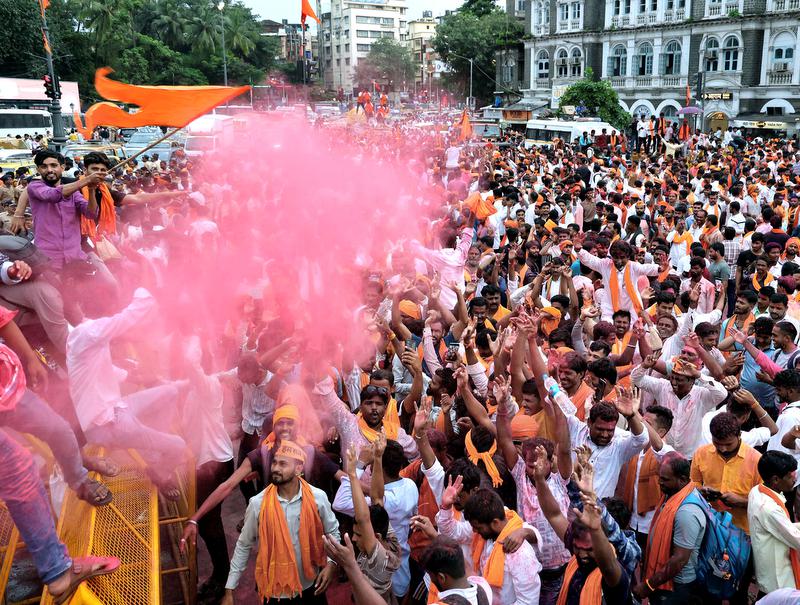Should Reservations Exceed the 50% Cap?

- 11 Sep 2025
Context:
The question of whether caste-based reservations should cross the 50% threshold has re-emerged in policy and judicial debates. Political commitments promising higher quotas, demands for deeper social justice, and judicial reviews—such as the Supreme Court’s recent notice on applying the creamy layer rule to Scheduled Castes (SCs) and Scheduled Tribes (STs)—have intensified the discussion.
Constitutional Framework
Articles15 and 16 of the Constitution enshrine equality in access to education and public employment while empowering the state to frame special provisions for Socially and Educationally Backward Classes (SEBCs), OBCs, SCs, and STs. At present, the reservation percentages at the Union level are:
- OBCs – 27%, SCs – 15%, STs – 7.5%, and EWS – 10%.This brings the total to 59.5%, already breaching the ceiling in practice. The debate centres on whether these provisions are exceptions to the rule of equality or instruments for achieving substantive equality.
Judicial Trajectory of the 50% Ceiling
- Balaji v. State of Mysore (1962): Declared that reservations should remain “reasonable” and introduced the 50% benchmark.
- State of Kerala v. N.M. Thomas (1975): Shifted focus toward substantive equality, treating reservations as a means to realise real equality.
- Indra Sawhney v. Union of India (1992): Reaffirmed the 50% cap, upheld 27% OBC quota, and introduced the creamy layer exclusion.
- Janhit Abhiyan (2022): Validated the 10% EWS quota, clarifying that the 50% ceiling applied only to caste-based quotas, thereby legitimising its breach.
- State of Punjab v. Davinder Singh (2024): Suggested extending the creamy layer principle to SCs and STs for equitable distribution of benefits.
Thus, the 50% rule is not a constitutional mandate but a judicially crafted balance.
Arguments for Raising the Ceiling
- Population Profile: Backward classes make up over 60% of India’s population (Mandal Commission, state surveys), yet reservations remain capped.
- Political Demand: States like Bihar have sought quotas up to 85%, citing under-representation.
- Unequal Access Within OBCs: The Rohini Commission reported that 97% of OBC benefits go to 25% of sub-castes, leaving ~1,000 groups unrepresented. Expanding and sub-categorising quotas could address this.
- Substantive Equality: Addressing historical disadvantages may require flexibility in ceilings.
- Precedents: Tamil Nadu, Maharashtra, and Haryana have legislated beyond the 50% cap, reflecting local realities.
Arguments Against Breaching the Cap
- Judicial Safeguards: The 50% rule maintains a balance between equity and merit.
- Unfilled Vacancies: Nearly 40–50% of reserved seats remain vacant; raising quotas without systemic reform will not resolve this.
- Creamy Layer Issues: Without stricter exclusions, higher quotas may further consolidate benefits among dominant groups.
- Efficiency Concerns: Excessive reservations could undermine administrative performance.
- Alternative Tools: Skill-building, better implementation, and private-sector inclusion can deliver justice without endlessly expanding quotas.
Way Ahead
- Caste Census (2027): Data-driven policy-making requires updated and accurate caste data.
- Sub-Categorisation: Implement Rohini Commission recommendations for fairer distribution within OBCs.
- Prioritisation Within SCs/STs: A two-tier system to protect the most deprived sections.
- Flexible Ceiling: Replace rigid caps with evidence-based, contextual ceilings.
- Beyond Reservations: Focus on education, entrepreneurship, healthcare, and livelihood generation.
Conclusion
The 50% ceiling emerged from judicial interpretation rather than constitutional text. While it has served as a stabilising principle, social realities demand a more nuanced approach. Instead of mechanically raising quotas, India must pursue a data-backed, sub-categorised, and efficiency-oriented reservation framework, complemented by investments in human development. This ensures that affirmative action remains an empowerment tool for the truly disadvantaged rather than a political instrument.
